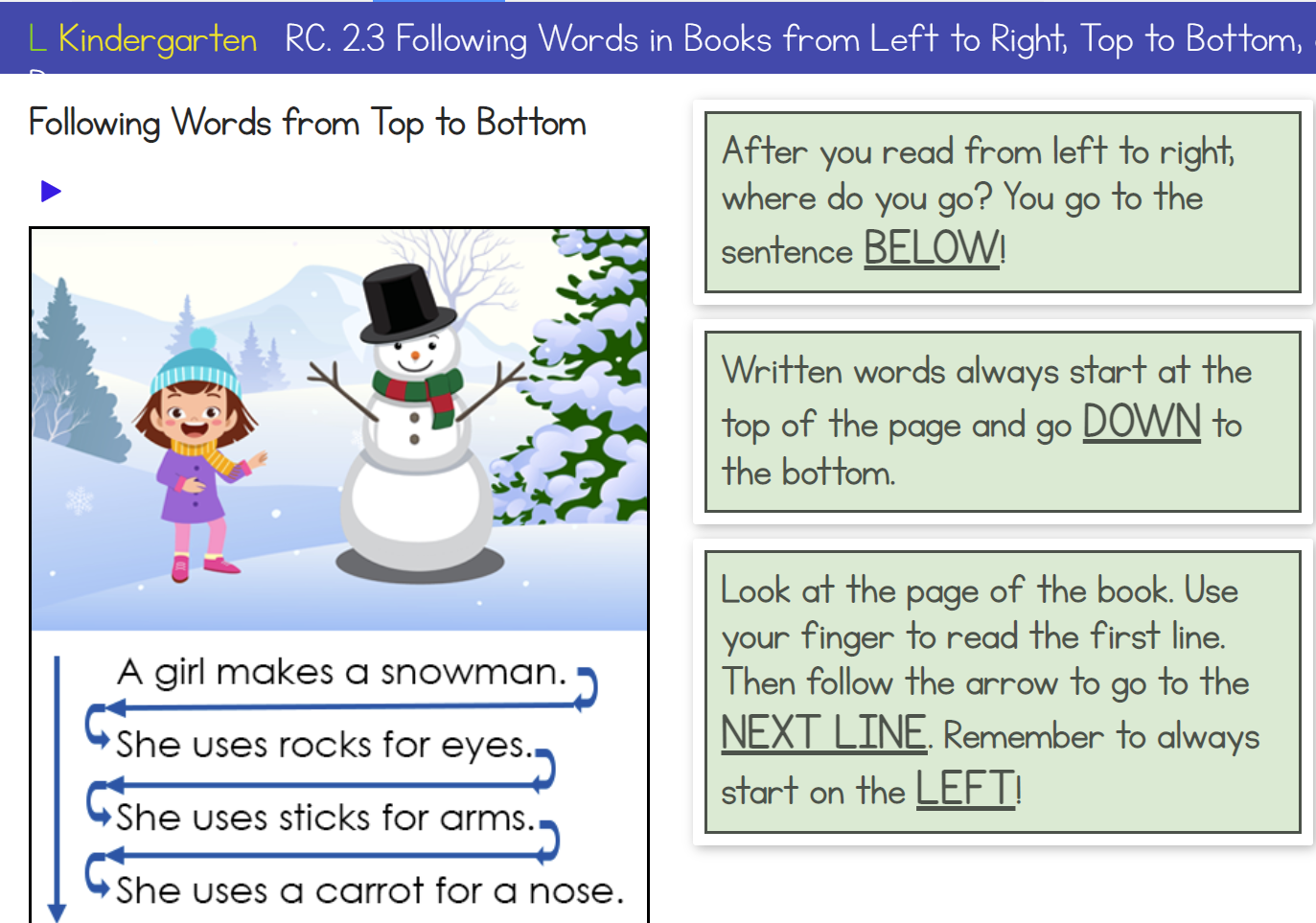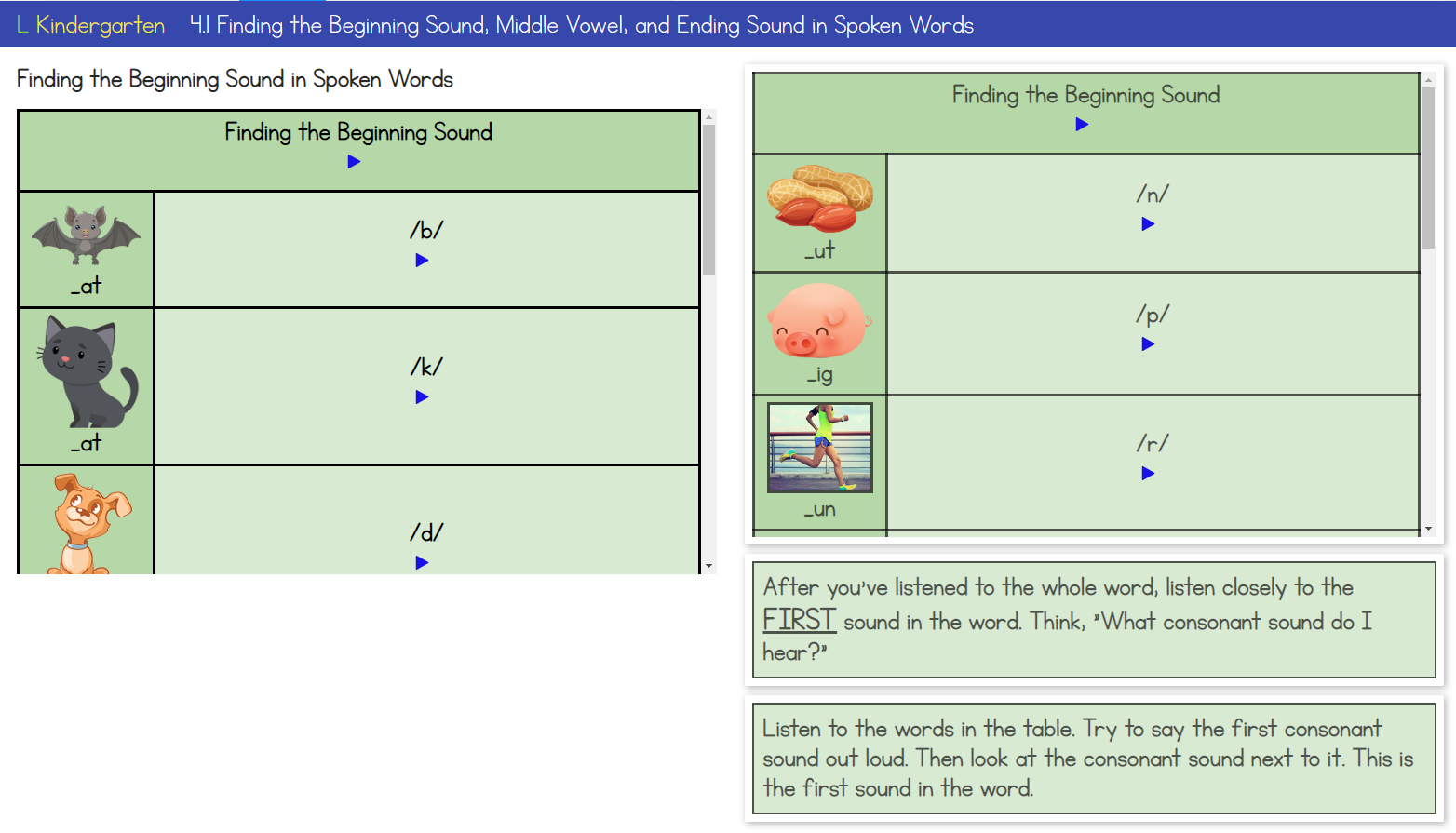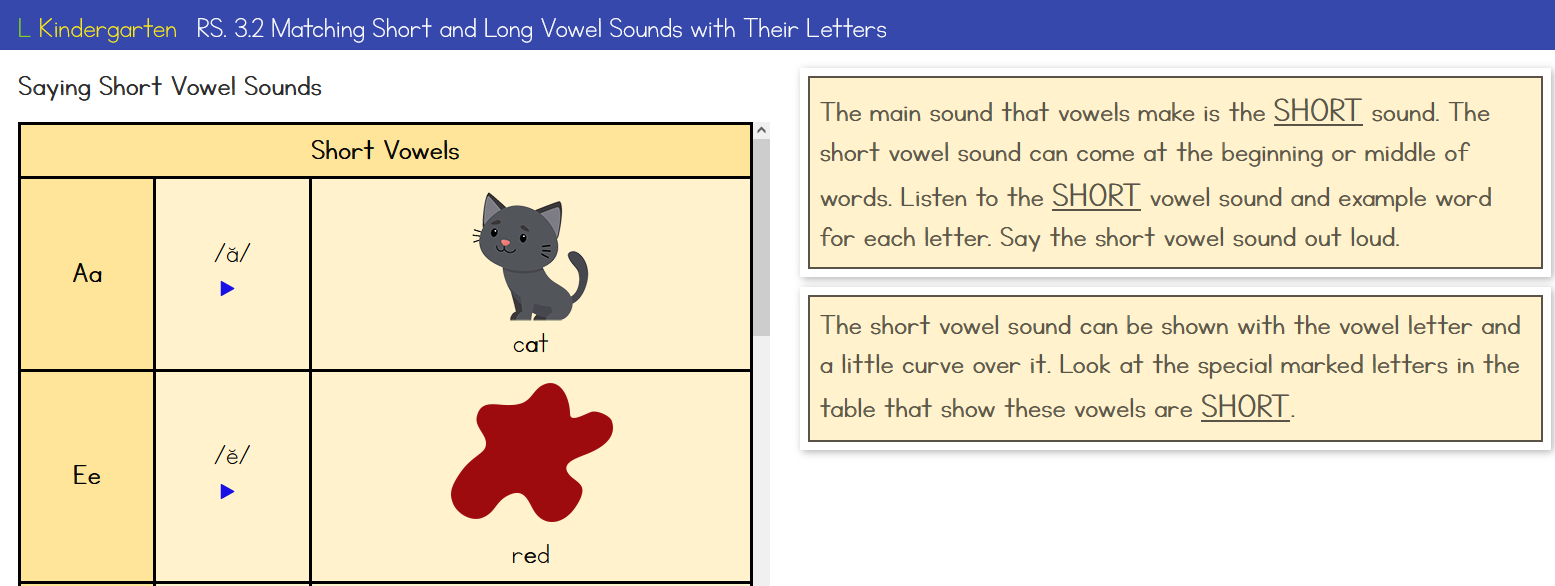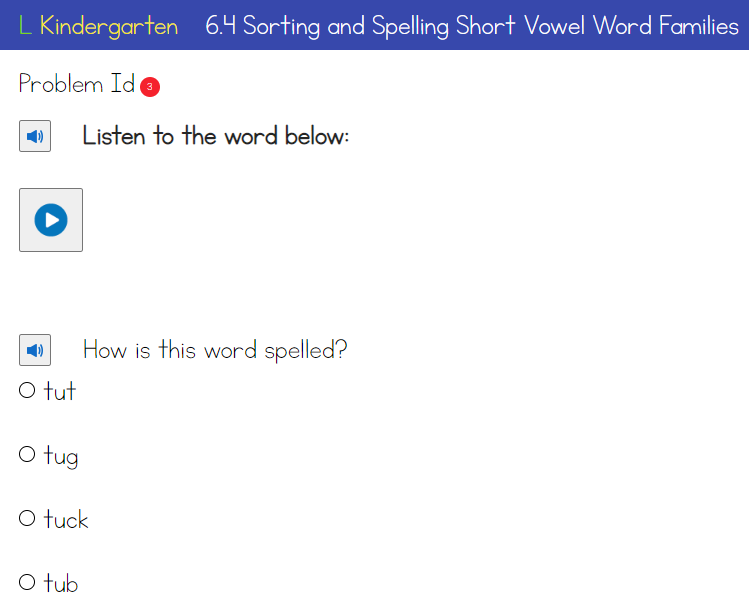Afficient Academy is thrilled to announce the debut of our new grade level for Afficient English: kindergarten. Now we can officially say that we meet the needs of ALL elementary school learners. While the core of our comprehensive, standards-aligned curriculum is the same, kindergarten boasts a VERY strong emphasis on foundational reading skills, also known as the science of reading. We are proud to say that we meet all aspects of science-based reading instruction, including book and print awareness, phonological awareness, phonemic awareness, explicit phonics, and developmental spelling.
Print Awareness
The first step in gaining literacy skills is to have print awareness, also called concepts of print. Children with print awareness understand that print has meaning, or that letters form words on a page. Students with print awareness also understand how to navigate a book from beginning to end. For example, in the lesson below, students learn how to read a book from left to right, top to bottom, and page by page.

Here are our print awareness skills for our Afficient English kindergarten curriculum:
1) Finding and Naming all Lowercase Letters
2) Finding and Naming all Uppercase Letters
3) Knowing that Words are Made Up of Letters
4) Knowing that Words are Separated by Spaces
5) Following Words from Left to Right, Top to Bottom, and Page by Page
6) Finding the Front Cover, Back Cover, and Title Page of a Book
7) Knowing the Purpose of a Page and the Spine of a Book
8) Finding the Author of a Book
9) Finding the Illustrator of a Book
Phonological Awareness
The second step in literacy development is to have a strong understanding of phonological awareness. Phonological awareness is the ability to identify and manipulate SPOKEN PARTS of words and sentences. For example, before trying to READ words that rhyme, children need to be able to HEAR words that rhyme and FIND the rhyming sounds in the words. For example, a great phonological awareness activity is to say a word and have students identify a word that rhymes with it. In the lesson below, you can see how students learn to find the rhyming sounds in words:

Here are our phonological awareness skills for our Afficient English kindergarten curriculum:
1) Finding Words that Rhyme
2) Finding Syllables in Spoken Words
3) Counting Syllables in Spoken Words
4) Blending Syllables in Spoken Words
5) Breaking Apart Syllables in Spoken Words
6) Building and Breaking Apart Words with Beginning and Ending Sounds (Onsets and Rimes)
Phonemic Awareness
The third step in developing literacy is to have strong phonemic awareness skills. Phonemic awareness is the ability to identify and manipulate SPOKEN SOUNDS in words. It is the LAST and most advanced step in developing phonological awareness. Students not only identify individual sounds, but learn how to add, delete, and replace sounds to make new words. In the exercise below, we are teaching students how to distinguish between beginning, middle, and ending sounds in words with three sounds, like “cat.” More advanced phonemic awareness skills are taught in our first-grade curriculum.

Here are our phonemic awareness skills for our Afficient English kindergarten curriculum:
1) Finding the Beginning Sound, Middle Vowel, and Ending Sound in Spoken Words
2) Adding Sounds to Make New Words
3) Deleting Sounds to Make New Words
4) Replacing Sounds to Make New Words
Explicit Phonics and Decoding in Reading
The next step in achieving fluency is explicit phonics instruction. Phonics is the ability to connect sounds to the letters on a page. In the lesson below, we teach students how to match the short vowel sounds that they have already learned to letters on the page. We use audio and visual support to help students make the connection between phonemic awareness and phonics.

Another part of phonics and decoding practice is to have students identify and memorize common words that are NOT decodable using phonics rules, like “the,” and “come.” We teach the first 100 high-frequency words (sight words) within our vocabulary module. We also have a lesson on sight word patterns in our language arts curriculum.
Here are our phonics and decoding skills for our Afficient English kindergarten curriculum:
1) Matching Consonant Sounds with Their Letters
2) Matching Short and Long Vowel Sounds with Their Letters
3) Reading Sight Words
4) Sorting Words with Beginning New Consonant Sounds and Blends
5) Sorting Words with Ending New Consonant Sounds and Blends
Developmental Spelling
Finally, a language skill that is closely tied with phonics and decoding is developmental spelling instruction. The concept is that, like phonics, spelling should be taught systematically and sequentially as students grasp progressively harder skills. In the lesson below, you can see that kindergarteners need to be able to listen to a word with three sounds and correctly identify the spelling of the word:

Here are our developmental spelling skills for our Afficient English kindergarten curriculum in order of difficulty:
1) Sorting and Spelling New Consonant Sounds
2) Sorting and Spelling Short Vowel Word Families
3) Sorting and Spelling Mixed Vowel Word Families
4) Sorting and Spelling Beginning Blends
5) Sorting and Spelling Words with Qq and Xx
6) Sorting and Spelling Ending Blends
7) Comparing the Spelling of Words that Are Alike
8) Finding the Right Spelling for Simple Words
As you can see, our Afficient English kindergarten curriculum challenges our youngest learners to be well-rounded readers and spellers with ample exposure to foundational skills. Schedule your FREE diagnostic test to enroll in Afficient English today!





